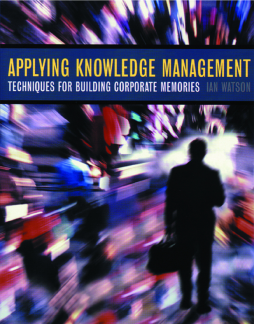
Additional Information
Book Details
Abstract
The wholesale capture and distribution of knowledge over the last thirty years has created an unprecedented need for organizations to manage their knowledge assets. Knowledge Management (KM) addresses this need by helping an organization to leverage its information resources and knowledge assets by "remembering" and applying its experience. KM involves the acquisition, storage, retrieval, application, generation, and review of the knowledge assets of an organization in a controlled way. Today, organizations are applying KM throughout their systems, from information management to marketing to human resources.
Applying Knowledge Management: Techniques for Building Corporate Memories examines why case-based reasoning (CBR) is so well suited for KM. CBR can be used to adapt solutions originally designed to solve problems in the past, to address new problems faced by the organization. This book clearly demonstrates how CBR can be successfully applied to KM problems by presenting several in-depth case-studies.
Ian Watson, a well-known researcher in case-based reasoning and author of the introductory book, Applying CBR: Techniques for Enterprise Systems has written this book specifically for IT managers and knowledge management system developers.
* Provides 7 real-world applications of knowledge management systems that use case-based reasoning techniques.
* Presents the technical information needed to implement a knowledge management system.
* Offers insights into the development of commercial KM CBR applications
* Includes information on CBR software vendors, CBR consultants and value added resellers
"Applying Knowledge Management: Techniques for Building Corporate Memories is very readable and follows a logical order, sticking to the facts without burdening the reader with a lot of irrelevant detail. Most existing texts on artificial intelligence applications or knowledge management tend to deal with isolated examples of CBR applications. In contrast, this text has the virtue of dealing with CBR exclusively, and in doing so shows a diversity of problems addressable by the CBR approach. This book will really be read, and not just consigned to some dusty shelf after reading the first few pages."
-Rick Magaldi, Senior Technical Consultant (Artificial Intelligence), British Airways
"This book is written in a clear and friendly style that presupposes no specialized technical knowledge. It is full of practical wisdom about what works, why it works, how to make it work, and what it looks like when it works. This would be a great book to give to every member of a knowledge-system development team."
-Alexander P. Morgan, Principal Research Scientist, General Motors
